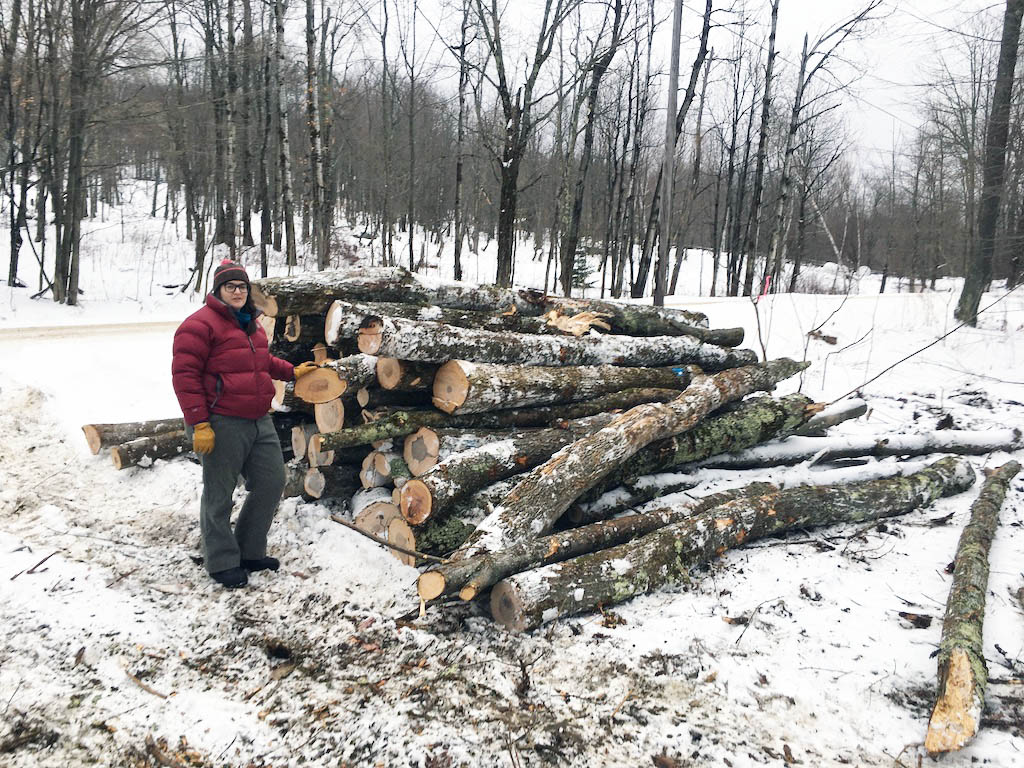Consulting Conservation Forestry
How do I take really good care of my forest?
How do I meet the planning, mapping, and forest management requirements of Vermont’s Current Use program?
My forest access roads are badly eroded–how do I deal with that?
I’d like to harvest trees without compromising my forest’s health–what does that look like?
Can I deal with invasive plants like common buckthorn without using pesticides?
Are cost-share funds available for some of my forest work?
In our office, a wall of shelves holds more than 200 green binders—one for each of the family forest owners we work with in the forests in and around the Center-west Ecoregion of Vermont. Collectively, the binders represent more than 22,000 acres of private forest land.
A substantial part of our work is to help family forests owners comply fully with the spirit and intent of Vermont’s Use Value Appraisal (Current Use) Program. Enrollment in this exceptionally important state program makes forestland ownership, management, and conservation economically feasible by appraising forestland at its use value (~$152 per acre) as opposed to its fair market value (~$1500+/-).
The purpose of UVA is to
- encourage and assist the maintenance of Vermont’s productive agricultural and forest land;
- to encourage and assist in their conservation and preservation for future productive use and for the protection of natural ecological systems;
- to prevent the accelerated conversion of these lands to more intensive use by the pressure of property taxation at values incompatible with the productive capacity of the land;
- to achieve more equitable taxation for undeveloped lands;
- to encourage and assist in the preservation and enhancement of Vermont’s scenic natural resources;
- and to enable the citizens of Vermont to plan its orderly growth in the face of increasing development pressures in the interests of the public health, safety, and welfare.
Timber harvesting equipment is becoming larger and timber markets more distant at a time when forest woodlots are becoming smaller and less economically viable. A key role and objective for VFF’s conservation foresters is to help family forest holders navigate the enrollment requirements of the Use Value Appraisal (UVA) program, as well as the realities of an increasingly mechanized forest industry, in ways that honor their ownership values and objectives.
Although not always immediately apparent, UVA is flexible enough to allow landowners to opt for very light-on-the-land approaches to forest management and harvest that will enhance the ecological health, beauty, and resilience of their forests in a rapidly changing climate.
Our first step in the process of creating a UVA forest plan is to identify your ownership objectives and the ecosystem attributes of your forest. One of our conservation foresters will meet with you, learn about your aspirations and ownership objectives for your forest, and gather site data about the forest community itself. Our forester will then develop a forest management plan that applies VFF’s forest-health-centered approach to managing your forest in ways that meet your ownership objectives. Our conservation mapper will develop a beautiful, Avenza-compatible map to accompany each conservation plan.

In addition to writing and updating forest conservation plans, we help landowners carry out their conservation management practices—marking forest treatments and harvests, marking wildlife habitat improvement cuts, improving and closing out access trails, painting boundaries, creating tree planting plans, and more.
VFF also offers events solely for the landowners within its green-binder pool—like our annual VFF landowner gathering and special landowner workshops that teach particular skills in forest conservation.





